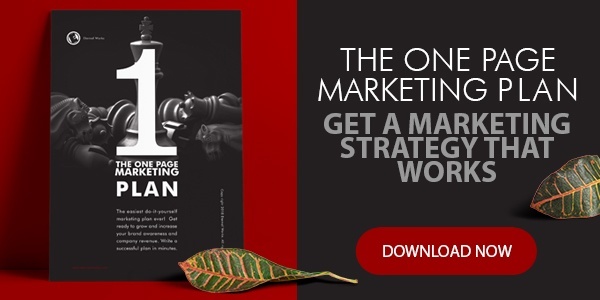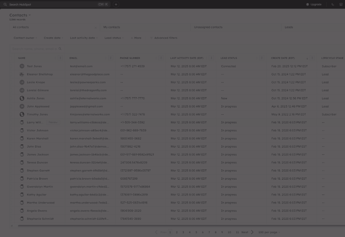Your job has enough challenges. Maybe you're head of marketing, VP of sales, the CEO or the owner of the company. No matter which seat is yours, time is very limited.
I'd like to share a few things that we've implemented to save ourselves more time, increase efficiency, improve client satisfaction, employee buy-in and make us more money.
The truth is it's just one thing. Yes, one thing to help our business grow and make everyone happier all around. Create memorable user experiences using workflows in HubSpot.
What are workflows? To quote HubSpot;
"they're an automated set of marketing and/or sales actions that execute based on a starting condition".
Workflows are a huge part of our inbound marketing strategy. Want to learn more about inbound marketing?
I think after you hear our story and our examples you'll be excited as well. It doesn't matter the size of your company; you'll be able to implement these even if you use something other than HubSpot. If you can automate emails and tasks, then you'll be just fine.
Client Onboarding
I think this is by far the easiest way to save time and make more money. It also ensures that every client gets the same experience from the start.
If you already have an onboarding process for new clients, then you'll love this. It's merely taking that process and putting into automation software like HubSpot, Marketo, or something similar.
For us, it was about making sure that every new client got the same, exact, information while removing simple, time-consuming tasks off everyone's plate.
The cool thing is that this also allows sales to notify all key team members of a new client simply by marking a deal closed and won.
Emails are automatically sent to clients, and internal staff and tasks are automatically created and assigned.
Don't get too excited, we still have to have people involved and manage projects and accounts, but at least we can eliminate some human error.
For example; when someone, like myself, gets excited about one particular thing and forgets to tell the new client something small, but important.
So what does this look like for us? Well, here's a glimpse at what we do when we launch a project or sign a new account.
- Send a welcome email to the client
- Notify staff of new client
- Schedule Project handoff for sales and project manager
- Email client about next steps
- Assign project ID for the new project
- Create Client Folder on Cloud Server
- Create Project Folder in the client folder
- Schedule Project Kickoff Meeting
- Provide front desk with Client info and primary contacts
- Find the perfect thank you gift for the new client
- Set up project tools (i.e., project management software, content software)
This is just the first 11 steps, and I bet your list is probably much longer than this. Imagine how much time this took when we were doing it all manually.
Now, I admit some of these things need you to tell the system you've completed the previous step, or it just sends the reminders, but it still saves us a ton of time and ensures that we have the framework in place to serve every client properly from the start.
Out of all the workflows, I think this is the most important because it touches your client and your team. It provides a better experience for everyone.
It also allows you to discover areas in your process that need to be improved, or enforced. I think you'll love having a workflow like this.
Employee Onboarding
This is my second favorite workflow we've implemented here at Eternal Works. The philosophy is the same; to provide a consistent experience and automate simple time-consuming tasks.
I'm sure you know it's better to tell everyone as a group than it is to tell them individually. What if you only had to say it once and everyone could hear it no matter when they're hired?
You'd save a ton of time and money. This is especially true when it comes to hiring. Why wait until you have a group of new employees to train?
You likely hired that person to solve a particular issue in your company, but now they can't get started until they have other people to go through training with so that the trainer isn't training everyone individually
The crazy thing is when you push back their start date so that you can hiring more people to make sure training is efficient.
Why not automate your onboarding for your new hires. You can write up emails, and have them send automatically to update them.
They can send out job details, expectations, and paperwork in advance. If you've read our blog on "Why you need YouTube" then you already know that it's much more efficient to record things that you want everyone to know.
This way you can give all of your new hires a voice and face to connect with.
So what does our New Hire Workflow look like? Well here are a few first steps
- Send email congratulating new team member
- Email staff notifying them of the new team member
- Email new hire, bios of other team members they'll be working with
- Send new hire calendar link to schedule date and time to come in and do paperwork
- Email new hire paperwork in advance
- Email Owners to introduce themselves to the new team member
- Send a reminder to admin to purchase a gift for new hire
- Send admin reminder to plan a welcome party for new hire
- Reminder to add new hire to payroll
- Announce new team member on social media and blog
- Send culture video to new hire
- Set up an email account
- Provide access to the cloud server
Hopefully, you are starting to see how much more efficient workflows can make your company.
Keep in mind that workflows are traditionally used for marketing, so if you use them in this way as well you'll certainly get your money's worth from whatever software you choose
So, what is the final workflow that I think you must have in your business?
Employee Training
This is honestly the easiest of the three. If you create videos, then it gets even better.
If you're not using video yet, here's a link to a really amazing and super simple to use browser based tool. It allows you to record your computer screen and your webcam simultaneously. It's called SoapBox by Wistia.
If you need a little help, here's a video of me walking through set up and use.
Here's the thing; doing your training this way means new hires can do the training indecently at their own pace. You can send emails, screenshots and if your using video like soapbox, you can send walk-throughs.
So here's an example of our employee training workflow
- Send training outline
- Send culture video
- Send expectations video
- Send file nomenclature diagram
- Send walk-through of cloud drive and file structure
- Send inbound training certification
- Send Software overview
- Send walk-through of project management software
- Send a link to the company blog
- Send links to company social channels
- Send a video of team resources
All of these videos are sent automatically by our HubSpot Marketing Automation software. Some of the items are hosted in our HubSpot portal while other things have links or attachments to external resources.
I hope you see how automating this simple tasks can free up company resources and ensure that everyone receives the same training.
I'll also admit we are constantly working to improve these workflows. They're not perfect, but having these are far better than when we didn't.
If you want to grow your business, save time, money and provide a top-tier experience for your clients and your team, then you must add these workflows to your business.
What next?
The key is getting started. Start to list out some simple, but time-consuming tasks you'd love to get off of your plate. Can you automate them?
Think about processes in your company where you'd like to make certain that it's done the same way every time. Can you automate that process?
If you need to, draw or list the process out. Do some process mapping and label things that can be automated. Keep in mind that automation can be triggered.
If you're not sure where to begin, give us a call or shoot us an email. We'd be glad to help.



